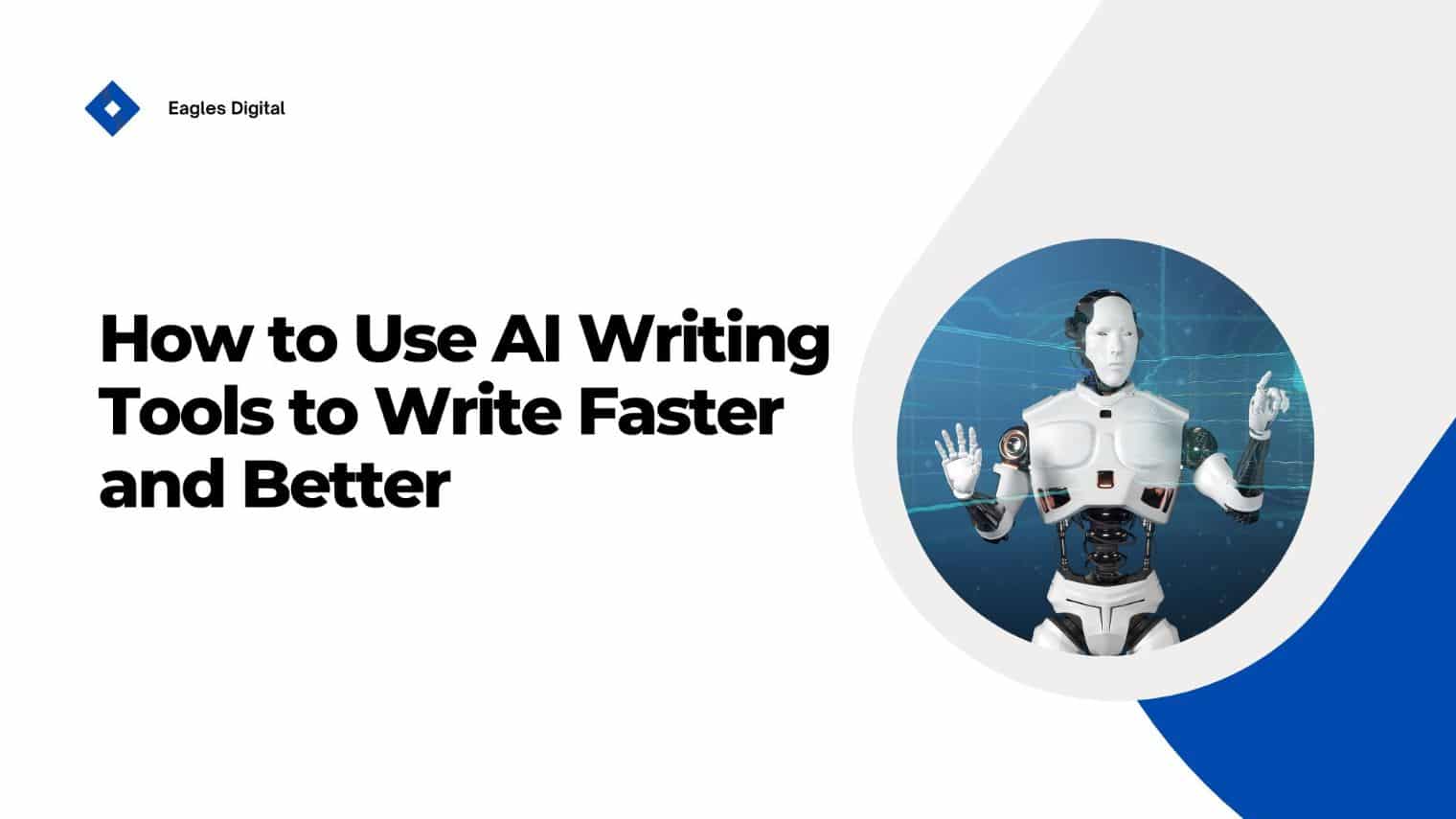How to Use AI Writing Tools to Write Faster and Better

Do you want to learn how to use AI writing tools to write faster and better?
AI writing tools have become a game-changer in content creation, offering speed, accuracy, and efficiency.
Having tested and experimented with various AI writing tools and building an effective content creation strategy, I can confidently say that the real secret isn’t just about choosing the right tool. It’s about knowing how to use them effectively.
In this guide, I’ll show you how to use AI writing tools effectively to save time and enhance the quality of your writing.
Understanding AI Writing Tools
AI writing tools are more like your personal writing assistant who’s always ready to help you with your writing tasks.
These sophisticated platforms use advanced language models to help you generate ideas, craft content, and refine your writing.
When you provide a topic or outline to an AI writing tool, it analyzes your input and generates high-quality content, based on its training.
The quality outputs depend significantly on how well you communicate your requirements to the AI through prompts – something I learned through a lot of practice.
How to Use AI Writing Tools to Write Faster and Better
1. Choosing your AI Writing Tool
Choosing the right AI writing tool is one of the most crucial steps for writing faster and better.
A well-matched AI tool produces content that requires minimal editing and aligns with your writing goals.
Additionally, investing in the right tool from the start will save you a lot of money in the long run. With the right AI software, you won’t need multiple subscriptions or spending hours crafting your content.
If you’re looking for the best AI writing tool for your content creation, Check out my ultimate guide to choosing the best AI writing tool.
2. Setting Up Your AI Writing Workflow
Having a clear goal is key when producing content with AI tools.
Are you writing a blog, an email, or a social media post? You need to know exactly what you want to achieve.
I always spend 10-15 minutes outlining my content goals, target audience, and key messages. This preparation makes a big difference in the quality of AI-generated content.
For example, when creating a blog post, you can provide the AI with:
- A specific topic or keyword (e.g., “Best AI tools for marketers”).
- A desired tone (e.g., informative, formal, or persuasive).
- A target audience (e.g., marketers, students, or small businesses).
3. Effective Prompting Techniques
The quality of your output depends heavily on how well you communicate with the AI tools.
If you want more accurate outputs, you need a clear prompting method.
Let me share a real example. Instead of asking for “a blog post about digital marketing,” I now write prompts like: “Write a 2000-word blog post about social media marketing strategies for small businesses. Target audience: business owners aged 35-50 who are new to social media. Include practical examples and focus on LinkedIn and Twitter. Use a professional but approachable tone. Must include latest statistics and actionable tips.”
This smart technique will prevent you from spending hours crafting content or fixing errors.
4. Maximize Your Output Quality
The secret to better results with AI writing tools lies in how you use them. Think of it as a collaborative process, not just a one-time command.
You should request the AI tool to generate a detailed outline for your topic. Do not hesitate to request your AI platform to refine your content 2–3 times until it feels just right.
Instead of asking for an entire article at once, break it down into sections. For example, focus on creating 300-400 words for one part at a time. This method keeps the content clear, well-organized, and easier to review.
5. Optimize your Content for SEO
Once the content is generated, you can optimize it for SEO.
The good news is that many AI-powered writing assistants include SEO features. You can use these tools to:
- Identify and integrate semantic keywords.
- Improve your content readability. Use simple, clear language that speaks directly to your target audience while maintaining the technical accuracy that search engines appreciate.
- Analyze meta descriptions and headlines for better click-through rates. A well-crafted meta description can significantly impact your search engine visibility, making the difference between a user clicking on your content or scrolling past.
For example, if writing about “AI writing tools,” you’ll want to incorporate related phrases like “content generation software,” “AI-powered writing assistant,” and “efficient content creation methods.”
6. Edit and Personalize your Content
If you want to produce personalized and authentic work, you should never publish AI writing content without human review and refinement.
To create personalized and authentic work, you must review and refine any AI-generated content before publishing. Adding your insights and edits ensures the final result reflects your voice and intentions.
Here is a proven three-step editing process:
- Check for accuracy and fact-verification
- Enhance the flow and tone
- Polish for style and brand voice
If you leave the above task to AI, the final output might not be as good as a human-written piece.
During editing, you should add personal insights, real-world examples, and emotional depth – elements that AI tools sometimes struggle with.
Pro Tips for Writing Faster and Better with AI
Let’s look at some advanced tips to take your AI content creation to the next level.
Combine Different AI Tools
Using different AI tools is a smart way to streamline your blog creation process.
You can use proven AI-generated tools like Jasper or Writesonic to draft your content quickly. These tools are impressive at generating initial ideas and structure.
Then, run all your content through Grammarly to catch those sneaky grammar errors and polish the language.
Combining AI tools helps you save hours of editing time and produce more engaging and polished content.
Save and Reuse Your Prompts or Templates
It’s crucial to have a collection of prompts and templates that you can reuse constantly. I recommend you create a Notion page or Google Doc where you can store your best-performing AI prompts. Trust me, this small step can save you time and ensure consistency across your content.
For example, if you’re a blogger who often writes blog posts about a specific niche. It will be great to have templates for :
- Blog post introductions
- Product reviews
- How-to guides
- Social media captions
Each template is like a shortcut that helps you work faster and more consistently.
Stay Updated on AI Features
AI tools are constantly improving, with new features being released frequently.
Stay updated by exploring tool updates and blogs or attending webinars. Features like tone adjustments or better keyword suggestions could make your writing process smoother.
How to use AI Writing Tools – FAQ
How much editing does AI-generated content require?
You can expect to spend some time editing and optimizing AI-generated content. The amount of editing needed depends on the tool you use and the complexity of your content.
However, your editing time decreases as you get better at prompting.
Are AI writing tools accurate?
AI tools are great for generating creative ideas and drafts, but you should always review the outputs to ensure accuracy and quality, especially for complex topics.
Wrap Up.
AI writing tools are constantly improving.
Whether you’re a beginner or an expert writer, integrating AI into your workflow can help you write better and faster.
Consider the above techniques to streamline your writing process, and stand out from the crowd.


